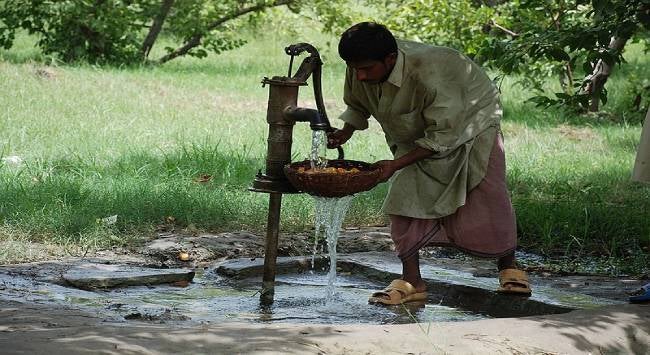Intersections of Environmental, Climate
and Rights Jurisprudence in Pakistan
Imran Ahmed
25 May 2023Summary
The intersection of environmental justice, climate action and rights jurisprudence has become a growing field of study, with courts worldwide increasingly handling cases that involve environmental concerns, human rights and constitutional law. In Pakistan, although the constitution does not explicitly include a fundamental right to a clean environment, aspects of environmental rights have been inferred from the right to life and dignity. Notably, the judiciary has played a crucial role in addressing climate change challenges, recognising the importance of a clean environment for life and dignity.
The intersections of environmental justice, climate action and rights jurisprudence have emerged in recent years as a rapidly growing field of study and examination. Moreover, courts worldwide have increasingly found themselves confronted with cases that intersect environmental concerns, human rights, and constitutional law. In situations in which legislative bodies and government administrations have failed to adequately address these challenges posed by climate change, pollution and environmental degradation, the role of the judiciary has expanded. As a result, climate and environment-focused litigation has become more prevalent. Pakistan is no exception.
Although the Pakistan constitution does not explicitly include a fundamental right to a clean and sustainable environment, certain aspects of environmental rights have been interpreted and incorporated into existing fundamental rights. Specifically, rights to a clean and healthy environment, access to clean water and a climate capable of supporting human life have been inferred from the fundamental right to life (Article 9) and the right to dignity (Article 14). Interpretations of these constitutional provisions have recognised that a clean and healthy environment is essential for the preservation and enjoyment of life itself and that the right to life encompasses not only the absence of physical harm but also the right to a dignified and healthy existence.
In Shehla Zia versus WAPDA (Federation of Pakistan [PLD] 1994 Supreme Court 693), the Supreme Court raised the question of whether a person’s dignity can be upheld if their right to life falls below the bare necessities. These necessities include adequate access to food, clothing, shelter, education, healthcare, a clean atmosphere and an unpolluted environment. The judges explain, “The word ‘life’ in the constitution has not been used in a limited manner. A wide meaning should be given to enable a man not only to sustain life but to enjoy it.” The Khewra Mines case (1994 Supreme Court Monthly Review [SCMR] 2061) addressed the crucial issue of water access and pollution, highlighting the significance of this matter in relation to the right to life. In this case, the Supreme Court explicitly recognised that in situations where access to water is scarce, challenging or restricted, the right to have water that is free from pollution and contamination becomes intertwined with the very essence of the right to life itself. In Imrana Tiwana vs Province of Punjab (PLD 2015 Lahore 522), the Lahore High Court (LHC) reasoned that the protection of the environment was “an inalienable right and perhaps more fundamental than the other rights” within the framework of constitutional rights. The LHC explained, “To us, environmental justice is an amalgam of the constitutional principles of democracy, equality, social, economic and political justice guaranteed under our Objectives Resolution, the fundamental right to life, liberty and human dignity.”
Despite Pakistan’s limited contribution to global warming, it faces a disproportionate vulnerability to climate change. In the Asghar Leghari v Pakistan case (2018 Corporate Law Decisions 424), the Supreme Court recognised the need for immediate adaptation measures to address disruptive climate patterns, highlighting the judiciary’s role in promoting climate consciousness in order to realise social and environmental justice. The Supreme Court criticised the state’s sluggishness in implementing the Framework for Implementation of Climate Change Policy (2014-2030), emphasising that this negligence infringes upon the citizens’ fundamental rights that require protection. In the more recent D G Khan Cement Company Ltd versus Government of Punjab (2021 SCMR 834) case, the Supreme Court prohibited the establishment and expansion of cement plants in environmentally fragile zones, stressing the significance of incorporating climate change considerations into government decisions and policies concerning vital issues such as water management in Pakistan. In Raja Zahoor Ahmed versus Capital Development Authority (comprising suits against the government), the Supreme Court issued an order which emphasised the importance of incorporating climate change considerations into urban planning processes, recognising that the impacts of climate change on cities directly affect the fundamental rights of the residents, including the right to life, dignity, and property.
The increasing number of petitions brought before the Supreme Court regarding climate-related injuries and environmental issues, coupled with the Supreme Court’s decisions in this regard, indicate that the Supreme Court is now actively engaged in promoting adaptive measures, raising awareness and shaping relevant policies. Moreover, in cases related to climate change, judges have been compelled to devise remedies within the realm of constitutional jurisdiction in order to elicit a more efficient response from the government.
. . . . .
Dr Imran Ahmed is a Research Fellow at the Institute of South Asian Studies (ISAS), an autonomous research institute in the National University of Singapore (NUS). He can be contacted at iahmed@nus.edu.sg. The author bears full responsibility for the facts cited and opinions expressed in this paper.
Pic Credit: Wikipedia Commons
-
 More From :
More From :
-
 Tags :
Tags :
-
 Download PDF
Download PDF



